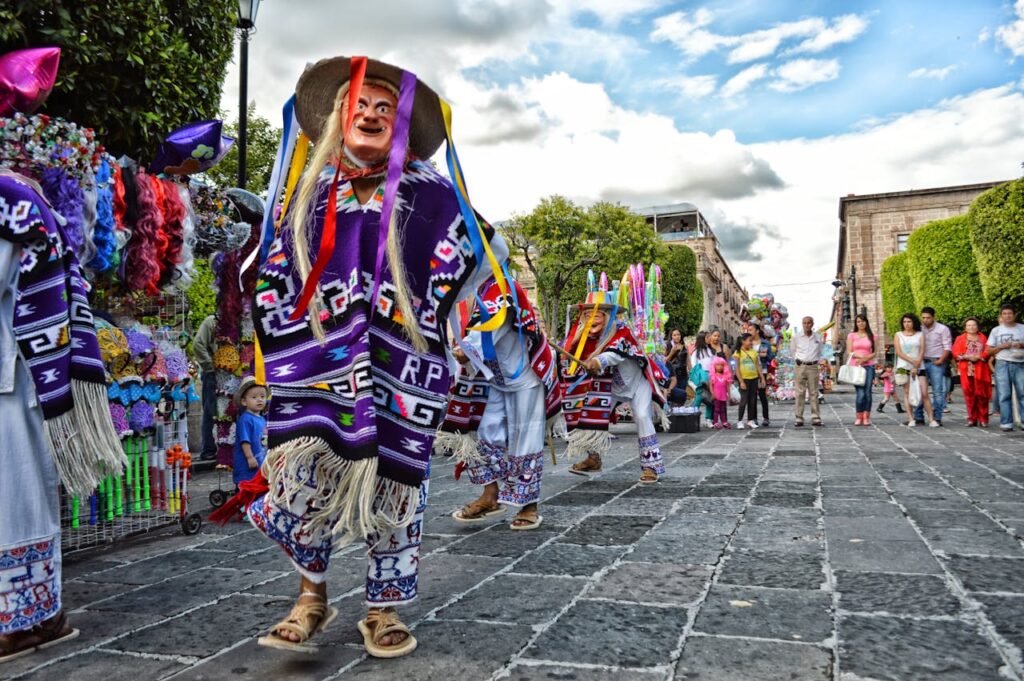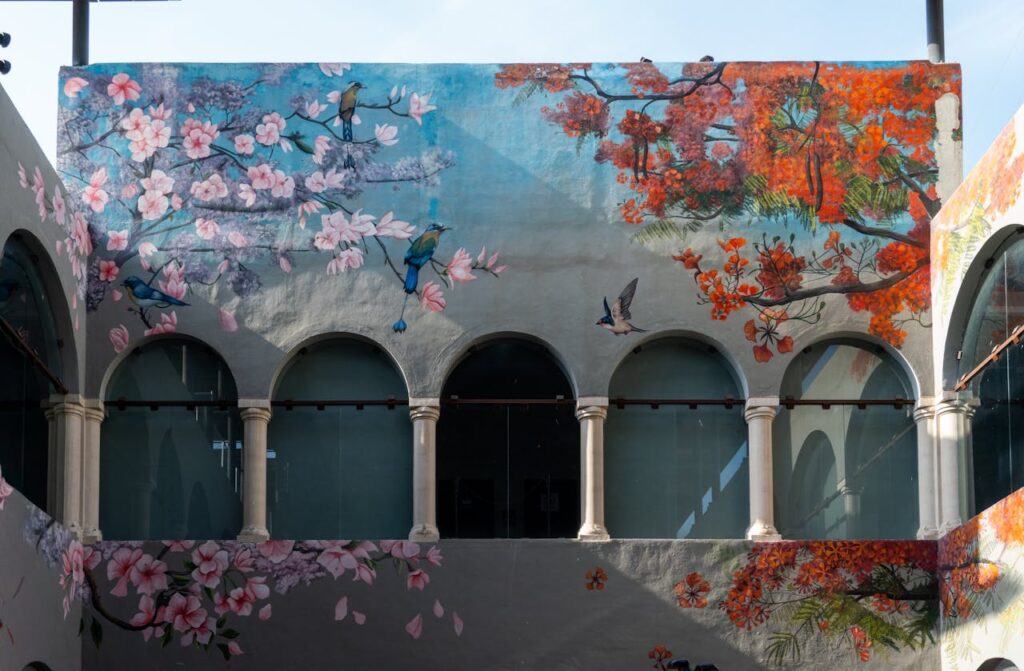Best Places to Visit in Chichen Itza, Mexico
Chichen Itza, one of the most famous archaeological sites in Mexico, is a testament to the ancient Mayan civilization’s architectural and astronomical prowess. Located in the Yucatán Peninsula, this UNESCO World Heritage Site is one of the New Seven Wonders of the World and attracts millions of visitors annually. The site is renowned for its well-preserved ruins, intricate stone carvings, and significant historical and cultural relevance. Here are some of the best places to visit in Chichen Itza, Mexico:
Best Places to Visit
1. El Castillo (Temple of Kukulcan)
El Castillo, also known as the Temple of Kukulcan, is the most iconic structure in Chichen Itza. This massive step pyramid, standing at 30 meters tall, is a marvel of ancient Mayan engineering and astronomy. The pyramid has 365 steps, one for each day of the year, and is aligned with astronomical events. During the spring and autumn equinoxes, the shadow of a serpent can be seen slithering down the pyramid’s steps, a phenomenon known as “The Descent of the Feathered Serpent.” El Castillo is a must-visit for its historical significance and architectural beauty.
- Key Attractions: Step pyramid, astronomical alignment.
- Activities: Sightseeing, photography.
- Location: Central Chichen Itza.
2. Great Ball Court
The Great Ball Court is the largest and best-preserved ancient ball court in Mesoamerica. Measuring 168 meters in length and 70 meters in width, it was used for the Mesoamerican ballgame, a ritual sport with deep cultural and religious significance. The court features stone rings set high on the walls and intricately carved panels depicting players and deities. The acoustics of the Great Ball Court are remarkable, allowing a whisper to travel from one end to the other. Visitors can explore the court and imagine the intense games that once took place here.
- Key Attractions: Largest ball court, intricate carvings.
- Activities: Exploring, learning about Mayan sports.
- Location: Northwest of El Castillo.
3. Temple of the Warriors
The Temple of the Warriors is a large stepped pyramid flanked by rows of carved columns, known as the Group of a Thousand Columns. The temple is named for the bas-relief carvings of warriors on its walls. The temple’s main structure features a series of steps leading to a platform with two large stone pillars at the entrance, which were once part of a roofed temple. The columns are believed to have supported a large roof, providing shade for gatherings. The Temple of the Warriors is a striking example of Mayan architecture and a significant historical site.
- Key Attractions: Stepped pyramid, carved columns.
- Activities: Sightseeing, photography.
- Location: East of El Castillo.
4. Sacred Cenote (Cenote Sagrado)
The Sacred Cenote is a natural sinkhole located at the northern end of Chichen Itza. This cenote was a sacred site for the Maya, who believed it was a portal to the underworld. It was used for ceremonial purposes, including offerings and sacrifices to the gods. Archaeological excavations have uncovered numerous artifacts, including gold, jade, pottery, and human remains. The Sacred Cenote is a powerful reminder of the spiritual and cultural practices of the ancient Maya.
- Key Attractions: Sacred sinkhole, archaeological artifacts.
- Activities: Exploring, learning about Mayan rituals.
- Location: North of El Castillo.
5. El Caracol (The Observatory)
El Caracol, also known as The Observatory, is a unique circular structure believed to have been used by the Maya for astronomical observations. The building’s design includes windows aligned with key celestial events, such as the solstices and equinoxes. El Caracol’s spiral staircase and unusual shape set it apart from other structures at Chichen Itza. This ancient observatory demonstrates the Maya’s advanced knowledge of astronomy and their ability to incorporate it into their architecture.
- Key Attractions: Circular structure, astronomical significance.
- Activities: Exploring, learning about Mayan astronomy.
- Location: Southwest of El Castillo.
6. Temple of the Jaguars
The Temple of the Jaguars is an intricately decorated structure adjacent to the Great Ball Court. The temple features detailed carvings of jaguars, warriors, and serpents, along with colorful murals depicting scenes of battle and ceremonial events. The building consists of a lower temple and an upper temple, accessible by a steep staircase. The Temple of the Jaguars is an excellent example of Mayan artistry and offers insights into the religious and cultural practices of the time.
- Key Attractions: Detailed carvings, colorful murals.
- Activities: Exploring, appreciating Mayan art.
- Location: Adjacent to the Great Ball Court.
7. Temple of the Bearded Man
The Temple of the Bearded Man is a small structure located near the Temple of the Warriors. It is named after the carving of a figure with a beard found on one of its panels. The temple features a single room with a flat roof and a platform at the front. The carvings and decorations on the temple suggest it was used for ceremonial purposes. The Temple of the Bearded Man is a lesser-known but intriguing part of the Chichen Itza complex.
- Key Attractions: Unique carvings, ceremonial structure.
- Activities: Exploring, photography.
- Location: Near the Temple of the Warriors.
8. The Nunnery Complex
The Nunnery Complex, also known as Las Monjas, is a large group of buildings that served as a government and administrative center. The complex includes several structures, such as the East Wing, the Annex, and the Church. The buildings feature intricate stone carvings and a mix of architectural styles, reflecting different periods of construction. The Nunnery Complex is named after the Spanish conquistadors who believed the buildings resembled a convent. The site provides a fascinating look at the political and administrative life of the ancient Maya.
- Key Attractions: Government complex, architectural styles.
- Activities: Exploring, learning about Mayan governance.
- Location: South of El Castillo.
9. Akab Dzib
Akab Dzib, meaning “The House of Mysterious Writings,” is a building located near the entrance of Chichen Itza. The structure gets its name from the undeciphered hieroglyphs found on its walls. Akab Dzib is one of the oldest structures in Chichen Itza, featuring a rectangular design with multiple rooms and a central courtyard. The building’s purpose remains unclear, but it is believed to have served as an administrative or residential space. Akab Dzib is an intriguing site for those interested in the mysteries of the ancient Maya.
- Key Attractions: Undeciphered hieroglyphs, ancient structure.
- Activities: Exploring, appreciating Mayan architecture.
- Location: Near the entrance of Chichen Itza.
10. The Platform of the Skulls (Tzompantli)
The Platform of the Skulls, or Tzompantli, is a large stone platform adorned with carvings of skulls and other symbolic motifs. The platform was used to display the heads of sacrificial victims, a common practice in Mesoamerican cultures. The carvings on the platform’s walls depict scenes of skull racks, warriors, and mythical creatures. The Platform of the Skulls provides a glimpse into the ritual practices of the ancient Maya and their reverence for the gods.
- Key Attractions: Skull carvings, ritual significance.
- Activities: Exploring, learning about Mayan rituals.
- Location: Near the Great Ball Court.
Summary Table
| Place | Description | Key Attraction | Distance from El Castillo |
|---|---|---|---|
| El Castillo (Temple of Kukulcan) | Iconic step pyramid with astronomical significance | The Descent of the Feathered Serpent | Central Chichen Itza |
| Great Ball Court | Largest ancient ball court in Mesoamerica | Stone rings, carvings | Northwest of El Castillo |
| Temple of the Warriors | Large stepped pyramid with carved columns | Bas-relief carvings of warriors | East of El Castillo |
| Sacred Cenote (Cenote Sagrado) | Natural sinkhole used for ceremonies | Archaeological artifacts | North of El Castillo |
| El Caracol (The Observatory) | Circular structure used for astronomical observations | Windows aligned with celestial events | Southwest of El Castillo |
| Temple of the Jaguars | Temple with detailed carvings and murals | Carvings of jaguars and warriors | Adjacent to the Great Ball Court |
| Temple of the Bearded Man | Small ceremonial structure with unique carvings | Carving of a bearded figure | Near the Temple of the Warriors |
| The Nunnery Complex (Las Monjas) | Government and administrative center | Mix of architectural styles | South of El Castillo |
| Akab Dzib | Ancient building with undeciphered hieroglyphs | Mysterious writings | Near the entrance |
| The Platform of the Skulls (Tzompantli) | Stone platform with skull carvings | Ritual significance | Near the Great Ball Court |
How to Reach Chichen Itza
By Car
Chichen Itza is easily accessible by car from major cities in the Yucatán Peninsula. The site is approximately 120 kilometers from Mérida and
200 kilometers from Cancun. Well-maintained highways connect Chichen Itza with these cities, making it a convenient day trip destination. Ample parking is available near the entrance.
By Bus
Several bus companies operate daily routes to Chichen Itza from major cities like Cancun, Playa del Carmen, and Mérida. The bus journey offers a comfortable and affordable way to reach the archaeological site.
By Tour
Many tour operators offer guided tours to Chichen Itza from nearby tourist hubs. These tours often include transportation, a guided tour of the site, and additional activities like visiting nearby cenotes or exploring the town of Valladolid.
Best Time to Visit Chichen Itza
The best time to visit Chichen Itza is during the cooler months, from November to April, when the weather is more pleasant for exploring the site. The early morning or late afternoon is ideal for avoiding the midday heat and crowds. The spring and autumn equinoxes are particularly special times to visit, as visitors can witness the “Descent of the Feathered Serpent” phenomenon at El Castillo.
Travel Tips
- Local Cuisine: Nearby towns offer a variety of traditional Yucatán dishes, such as cochinita pibil (slow-roasted pork), panuchos (stuffed tortillas), and salbutes (fried tortillas with toppings). Be sure to try these local specialties at nearby restaurants.
- Cultural Insights: Chichen Itza is a sacred site with deep cultural and historical significance. Visitors should respect the site by following the rules, staying on designated paths, and refraining from climbing on the ruins.
- Safety Tips: Chichen Itza is generally safe for tourists, but it’s important to stay hydrated, wear sunscreen, and bring a hat or umbrella to protect against the sun. Keep personal belongings secure and be cautious of pickpockets in crowded areas.
Itinerary Suggestions
One-Day Trip
- Morning: Arrive early to explore El Castillo and witness the impressive pyramid in the morning light. Visit the Great Ball Court and the Temple of the Jaguars.
- Afternoon: Explore the Temple of the Warriors and the Sacred Cenote. Have lunch at a nearby restaurant and try traditional Yucatán dishes. In the afternoon, visit El Caracol and the Nunnery Complex.
- Evening: If visiting during the equinox, stay for the “Descent of the Feathered Serpent” phenomenon at El Castillo. End your day with a visit to the Temple of the Bearded Man and the Platform of the Skulls.
Chichen Itza offers a fascinating journey into the history and culture of the ancient Maya civilization. Whether you’re exploring its iconic structures, learning about its rituals, or marveling at its architectural wonders, Chichen Itza promises an unforgettable experience.




















